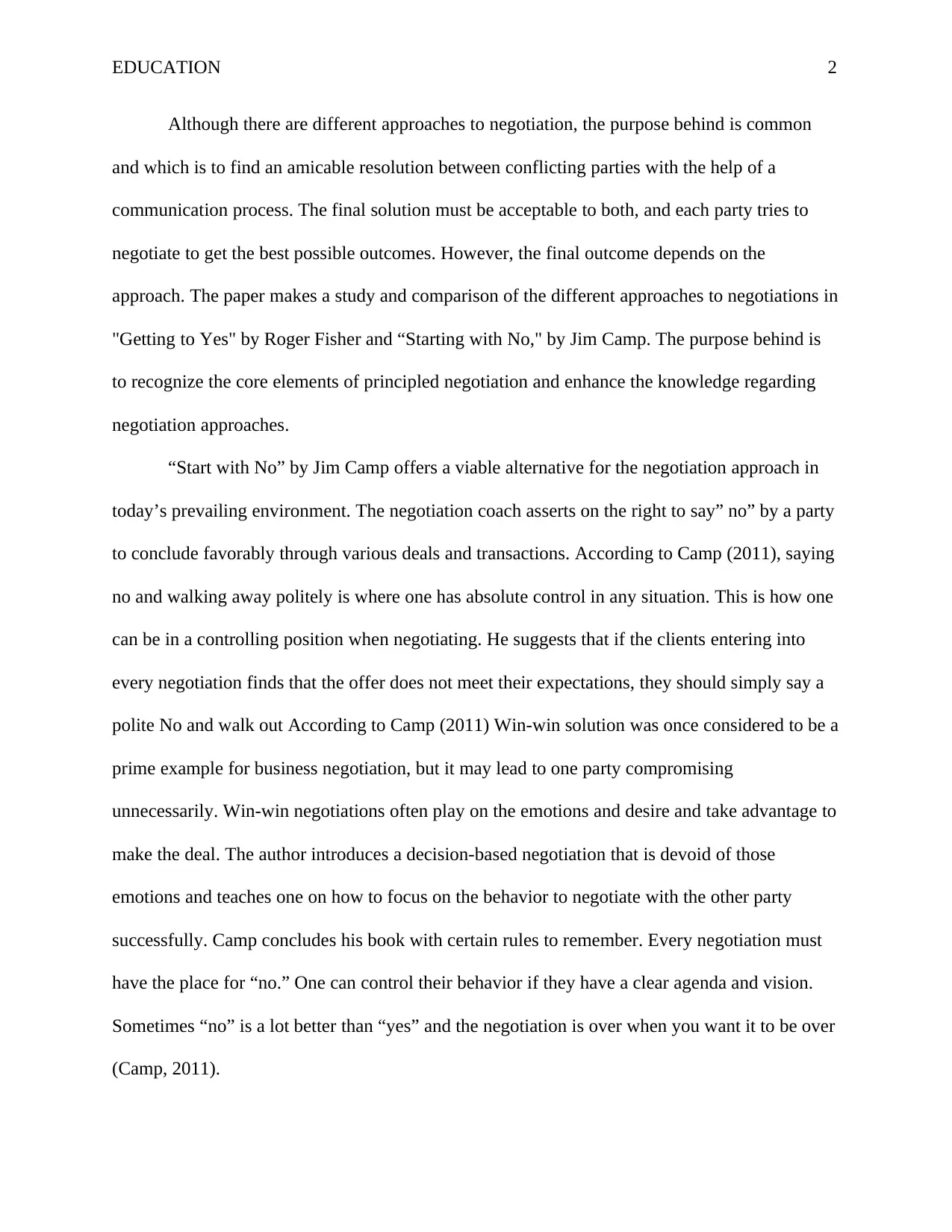Fisher's 'Getting to Yes' vs. Camp's 'Start with No' Tactics
VerifiedAdded on 2023/04/23
|4
|798
|496
Essay
AI Summary
This essay compares and contrasts two distinct negotiation approaches presented in Roger Fisher and William Ury's 'Getting to Yes' and Jim Camp's 'Start with No.' 'Getting to Yes' advocates for principled negotiation, emphasizing mutual interests, objective criteria, and separating people from the problem to reach mutually beneficial agreements. In contrast, 'Start with No' promotes the power of saying 'no' to maintain control and avoid unnecessary compromises, focusing on decision-based negotiation devoid of emotional manipulation. The essay highlights the core elements of each approach, emphasizing that while 'Getting to Yes' aims for a mutually satisfying 'yes' through collaboration, 'Start with No' empowers negotiators to walk away if their needs aren't met. Both books underscore the importance of strong negotiation skills, advocating for positive communication and a focus on long-term goals over immediate monetary gains. Desklib provides access to this essay and many other solved assignments for students.
1 out of 4







![[object Object]](/_next/static/media/star-bottom.7253800d.svg)